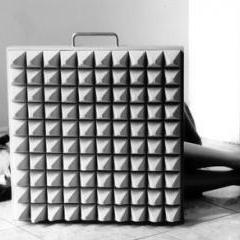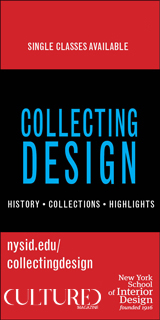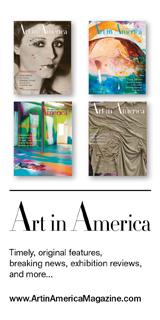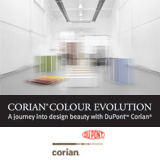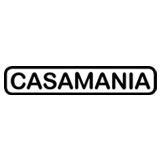Critical of a Lack of Criticism
by Edwin Heathcote
The recent emergence of ‘Critical Design’ as a serious questioning of the traditional processes has highlighted an intriguing phenomenon. The idea that designers are increasingly feeling the need to impose a critical framework suggests that there might be a lack of criticism of design itself.
And this is exactly the case. Design exists in a curious vacuum of theory and critique. The world of art has developed an extraordinarily complex internal discourse which is often deliberately opaque, which has become an end in itself. Architecture too has its dense, impenetrable - often unreadable – theory, here frequently used by practitioners who find themselves unable – or unwilling – to practice in the rigorous and grinding world of clients, contracts and construction, or otherwise as an adjunct to building, an exploration of the physically or politically difficult.
Art theory is necessary to justify the cult status of often vague works whilst architecture theory exists to provide an intellectual outlet for ideas which cannot be built and both, of course, reinforce the intellectual rigour of their disciplines as well as validating practitioners in a wider, usually academic context.
But design is strangely lacking in that critical discourse. That is not to say there is no good writing on design, from Villem Flusser to Norman Potter, Roland Barthes to George Nelson, there are nuggets of real joy which are capable of suddenly illuminating whole realms which had previously seemed mundane. But there are no standard texts, no piercing critiques, no overarching theories.
It is an intriguing hole. At the exact moment that design culture – in its manifold variations from graphics to fashion – becomes a part of mainstream culture, it disappears from critical analysis. Everyone is now a default graphic designer, every document and powerpoint presentation demands a choice of fonts and layouts and a language which was previously the preserve of a privileged few. iPhones, iPods and iPads have made Apple and chief designer Jonathan Ive into a cult company and cult designer respectively. An acceleratingly disposable culture of consumption and a proliferation of new product types (each increasingly essential to self and projected image, from mobile phones and laptops, trainers and MP3s) has increasingly made design a key selling point and the emergence of Design Art as a new route to market for editions has catapulted designers into high society and high prices.
It is astonishing then that not only does this huge critical hole exist in the elevated realms of theory but that it is gaping just as wide in the popular media – there are virtually no specialist design critics. Yet fashion, interiors, art and the others have separate sections spilling out of the papers - even that cultural ugly sister architecture has dedicated correspondents. At the same time design is becoming big business in the museums, MoMA’s Ron Arad show, No Discipline, attracted nearly 350,000 visitors in 2009, astonishingly making it the twelfth most visited exhibition in any museum anywhere in the world. So why this persistent lack of critical vigour in design?
The lack of a critical framework might partly be to do with our closeness to design. It sounds counterintuitive, our everyday interaction with products should make us more aware of their flaws, yet familiarity can produce indifference. Partly it is to do with a subservience from designers themselves who often don’t ask the right questions, not just from a functional or manufacturing point of view but about the necessity or desirability of the new product. The relationship between architects and power has been endlessly interrogated yet designers seem to get off lightly.

There is a lack of vision about context, the seamlessness of what has become known as the military-industrial/entertainment/complex, a shadowy realm which embraces digital technology, surveillance, weapons, CCTV, monitoring and the development of video games which inure children to the horrors of war remain uncovered, discussed only by fringe academics yet the coincidences between defence, security, globalisation and mass manufacture could cause real alarm if there was an appetite for investigation.
Design Art has served to swing what little criticism of design there is towards art discourse, the language of the white cube. This has in fact let the far larger field of industrial design off the hook. By concentrating on the special, on the semi-sacred realm of the work on the podium in a museum, tough questions about the bigger picture are being forsaken in favour of a world of international glamour and opening nights.
The strange result is that whilst artists are increasingly held to account, whilst Damien Hirst’s big sale was seen as the harbinger of the end of the era of excess and the artist is relentlessly criticised, few questions are being asked about what design is for.
Is Design art about something beyond investment? Certainly it is an effective vehicle for exploring new techniques which would be unrealisable in mass production, for new ideas which question fundamental assumptions but where are those critiques? A few designers, from Dunne & Raby to Jurgen Bey do seem to be asking questions about the process and about the public, to be moving away from a fetishisation of the object, providing an alternative vision to the museumification of design whilst an increasing tendency on behalf of design institutions to concentrate on architecture rather than product seems to indicate an uncertainty about the critical rigour of design shows.
The result of this is that it is being left entirely to the market, to the international design fairs from Miami to Milan and beyond to set the frame- work within which design is conceived, discussed, presented and sold. And, of course, there is little chance of trade fairs introducing questions which fundamentally question or undermine the basis of their business.
The irony is that design itself is booming, is attracting attention, and investment like never before. But look what happened to the banks which, for decades, called for lighter regulation, they destroyed their own value and mugged the tax-payer. The danger is of design becoming a special purpose vehicle which exists for its own sake, critical rigour, interrogation and negotiation is design’s regulation, without it, there is only pure consumption.






